Fur Day on the Hill 2024: Fur Institute Strengthens Political Ties
by Doug Chiasson, Executive Director, Fur Institute of CanadaOn February 6, the Fur Institute of Canada returned to Ottawa for Fur Day on the Hill 2024. Supporting us…
Read More

On February 6, the Fur Institute of Canada returned to Ottawa for Fur Day on the Hill 2024. Supporting us…
Read More
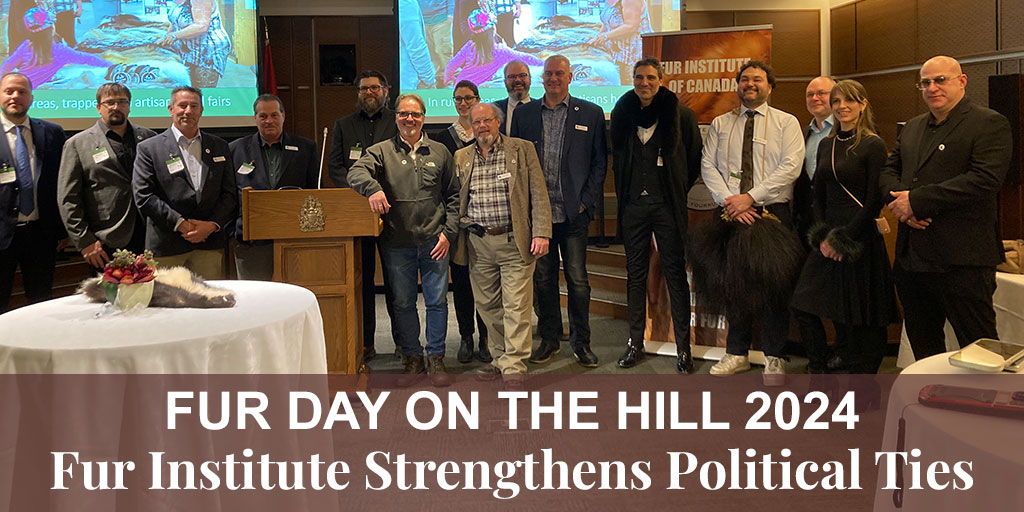
On February 6, the Fur Institute of Canada returned to Ottawa for Fur Day on the Hill 2024. Supporting us were our friends at Summa Strategies, and joining us were our colleagues from the Ontario Fur Managers Federation, Canada Mink Breeders Association and Saga Furs.
FIC Board members had approximately 30 meetings with Members of Parliament, Senators, representatives of the Prime Minister’s Office and Ministers. Topics covered ranged from re-establishing Canada as a fur leader, supporting Canada’s sustainable and humane seal harvest, and defending the use and trade of fur around the world. Targeted support to promote Canadian fur at home and abroad, continuing the Canadian Seal Products campaign, and a strategy to work collaboratively between the diplomatic corps and the FIC to combat disinformation and trade bans on fur, are all initiatives that the Institute team discussed with decision-makers.
We also hosted Parliamentarians and allies from the nation’s capital for a cocktail reception, where they were able to experience fur garments from Créations GAMA in Montreal and Ottawa’s own Pat Flesher Furs. The chilly February Ottawa weather gave a great opportunity for FIC members to wear their own furs, and for MPs to bring theirs as well.
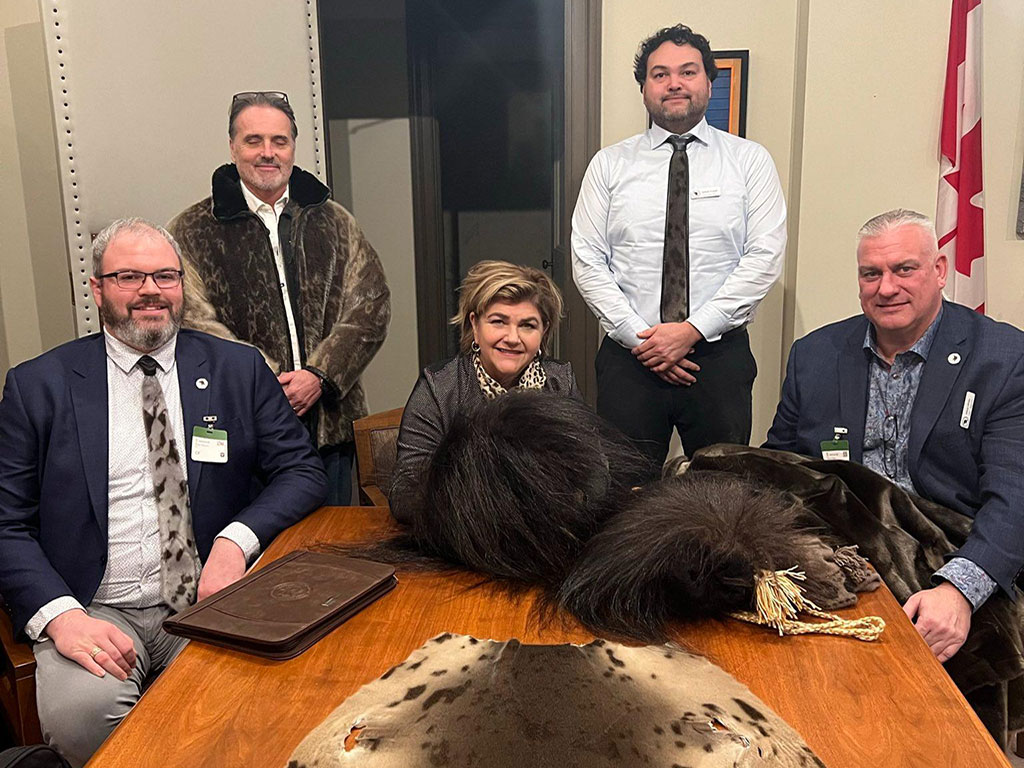


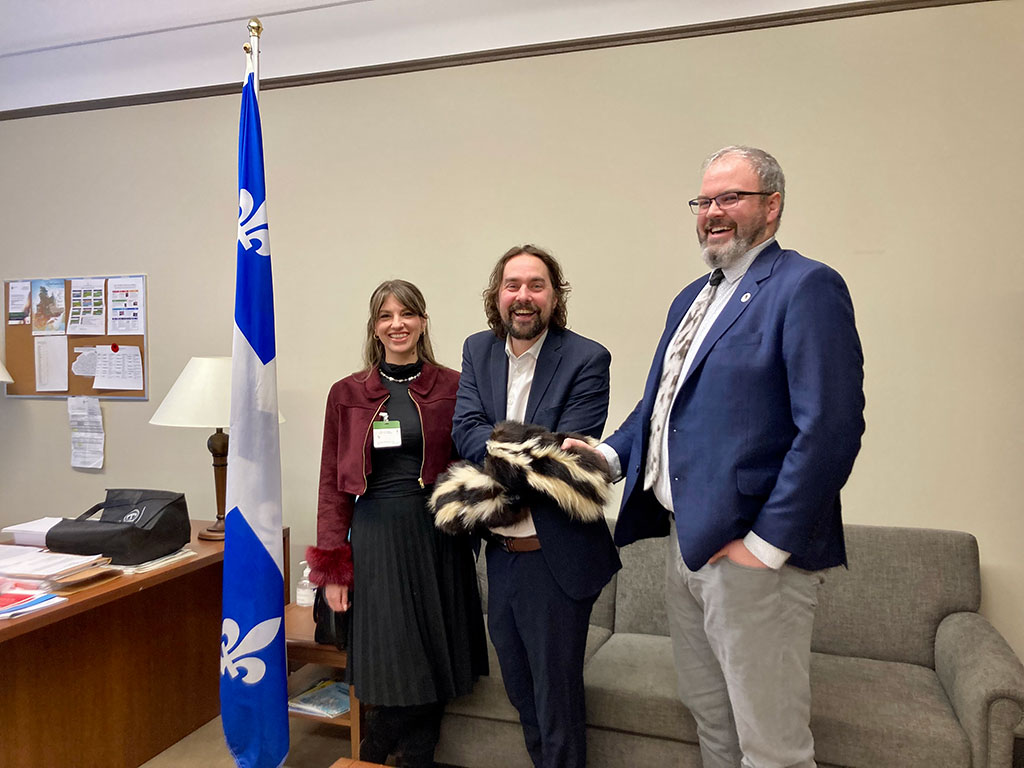
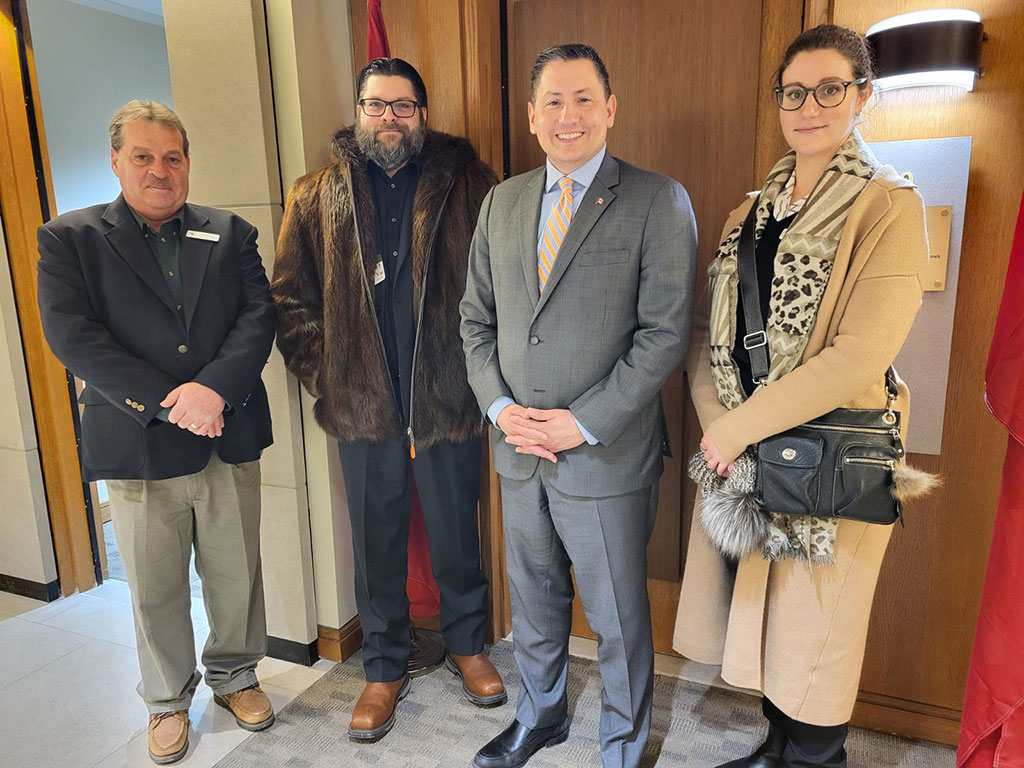
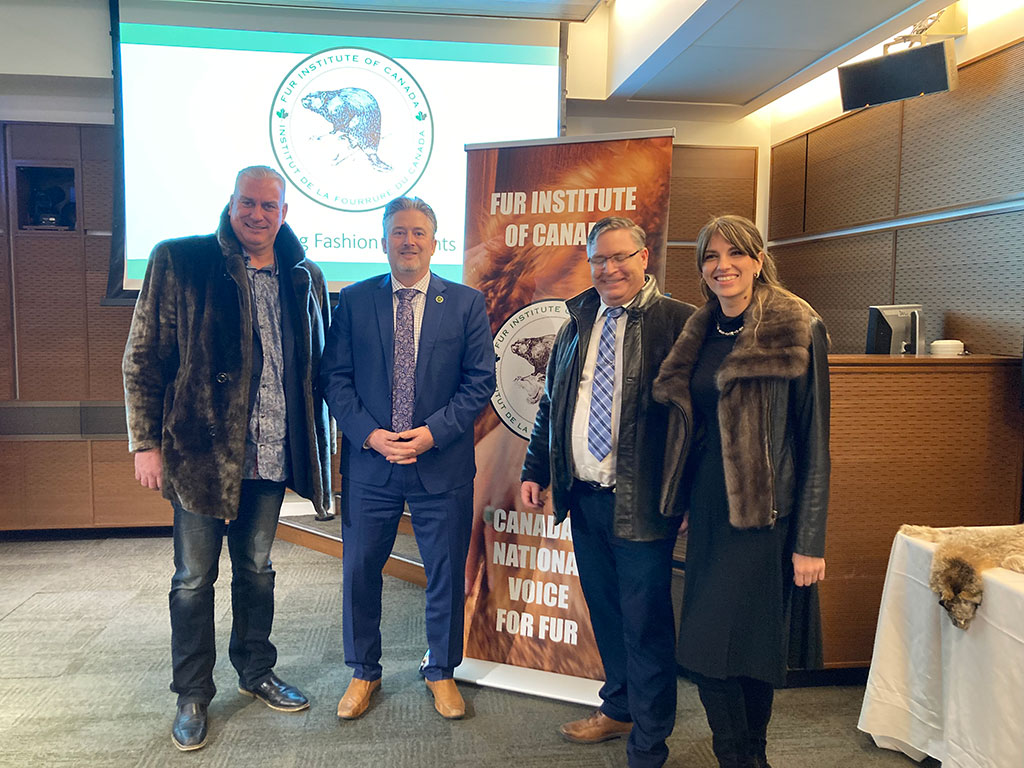



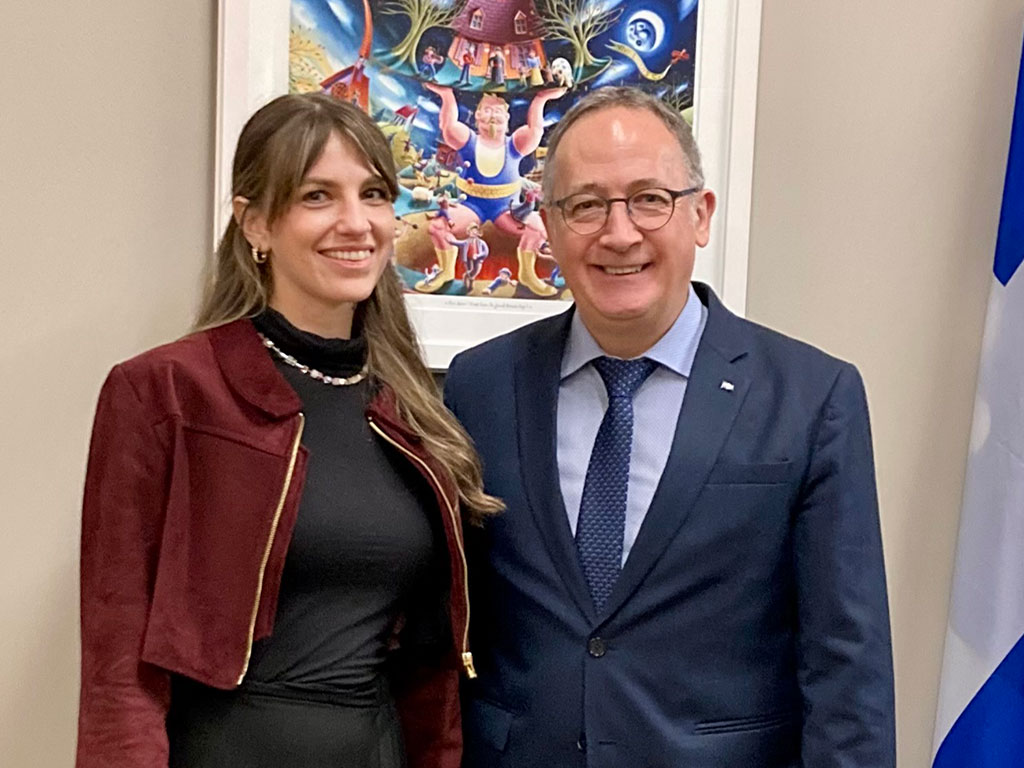
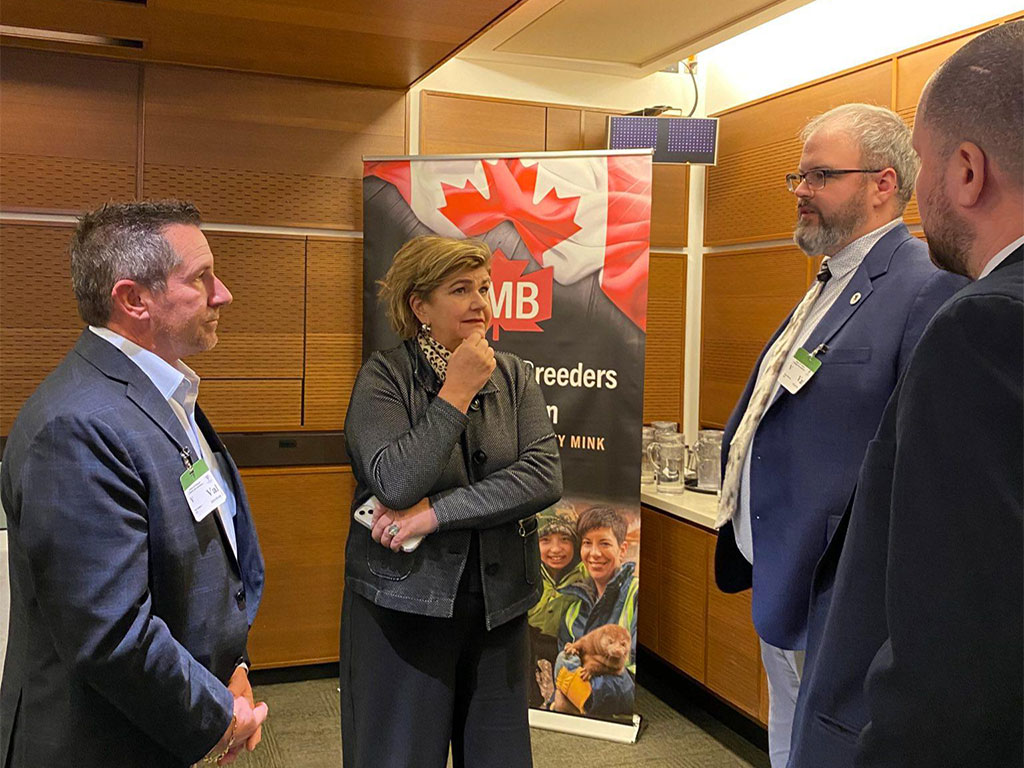
Building strong relationships with Parliamentarians and government decision-makers is an essential part of FIC’s mandate to advocate on behalf of Canada’s fur trade. By re-establishing Fur Day on the Hill as an important part of the Ottawa calendar, the Institute is gaining allies of all political stripes, and making sure that more of the people who make decisions that affect our industry are familiar with our organization and our trade.
The FIC staff and Board will continue to engage with governments at the federal, provincial and territorial levels to support and defend Canada’s fur trade throughout the year.
SEE ALSO: Fur Day on the Hill: Fur Institute welcomes friends in Ottawa. Truth About Fur, May 1, 2023.
Before the Internet came along and transformed our lives, trying to get our opinions heard in the media was hard…
Read More

Before the Internet came along and transformed our lives, trying to get our opinions heard in the media was hard at best, and almost impossible if the newspaper, TV or radio station had national reach. As a result, most people didn't even try, including people of the fur trade. But times are changing, and certainly where local media are concerned – so much, in fact, that if you have a lifelong habit of not bothering, now would be a good time to kick it.
Realistically speaking, it's still hard to express opinions in media with very wide reach, even just a major city, unless you are invited to contribute. And for that to happen, you usually need to be a recognised authority in your field, or your views have already been published elsewhere. For Joe Shmoe, seeing just a humble letter-to-the-editor in print is still cause for astonishment and celebration.
On the local news front, though, the chances of the small guy being heard are improving all the time.
Thanks to the Internet, local media outlets have mushroomed, unfettered by constraints like the costs of newsprint, air time, or even maintaining an office. As long as you're online, you can launch a social media site, and for a few hundred bucks you can have a website or podcast. And you can then "monetize" your site to cover costs by accepting advertising.
There's a downside, of course. For example, fake news is everywhere now, and many so-called "news" sites are rubbish, existing only to generate income from clicks.
But we're all (hopefully) becoming more selective in our browsing, and quality sites have a tendency to rise to the top. Among these are local news outlets now able to realise their dreams without breaking the bank.

A perfect example is VTDigger, serving the US state of Vermont since 2009. (The total population of Vermont is only about 650,000, so it's pretty local.)
In its own words, "VTDigger began as a scrappy, volunteer effort focused on investigative journalism. Since then, it has grown into Vermont’s most essential news organization, powered by more than two-dozen journalists and boasting the state’s largest newsroom."
Importantly, it doesn't just produce original reports. It also goes out of its way to encourage readers to submit opinion pieces on matters of local interest. And one of these happens to be wildlife management, with an emphasis on regulations for trapping furbearers.
So if Vermonters weren't informed before, they must now be one of the most informed communities in North America on this subject. A simple search of VTDigger's website for the term "trapping" brings up literally hundreds of opinion pieces submitted by readers, so many in fact that we'll list only a few of the more recent ones here:
Kevin Lawrence: Anti-hunters contribute nothing to Vermont’s wild places. June 11, 2023.
Jim Taylor: Four tribes of Abenaki do not support the anti-trapping movement.' June 4, 2023.
Will Staats: Vermont’s trapping culture is being threatened. May 7, 2023.
Brehan Furfey: Wildlife conservation depends on regulated trapping. April 20, 2023
Ray Gonda: The value of trapping vs. the anti-establishment animal rights persons. April 18, 2023.
Mike Covey: If you don’t like fishing, hunting or trapping, then don’t partake. February 8, 2023.
Bruce Baroffio: Trapping has a process for best management practices. February 7, 2023.
Paul Noel: No one more than a trapper wants to avoid catching a domestic dog. January 19, 2023.

As icing on the cake, many of these opinion pieces find an audience beyond readers of VTDigger – sometimes far beyond.
That others are interested is unsurprising, since the debate about trapping regulations is playing out across North America. But how does word spread?
SEE ALSO: When pet dogs are accidentally trapped, why are media reports so unbalanced? Truth About Fur.
Again, it's all down to the power of the Internet.
I first learned about VTDigger when its opinion pieces started showing up in my Google Alerts feed. This is a free web content monitoring service, but there are many others, and millions of people are using them. Or there are many other ways you might stumble on these pieces, the most common being "shares" on social media sites.
But this not an article promoting one local media site that happens to have a lot of quality trapping content. VTDigger is just an example which shows how local media are entering a golden age, and, if they're smart, they are positively encouraging their readers to engage.
SEE ALSO: "Fur Fights Back!" It's time for a strong industry communications campaign. Truth About Fur.
So if your local news site is already engaging with its audience, that's great. Get involved, and put pen to paper! If not, encourage them to change their ways, and by all means point to VTDigger as a shining example of what can be achieved.
Also tell your trappers councils, associations, and national organisations like the Fur Institute of Canada, Fur Takers of America and the National Trappers Association, when you see opportunities for us to push back on anti-trapping and anti-fur propaganda in local news.
And last but by no means least, feel free to submit your opinion to Truth About Fur for publication as a blog post.
It’s been five long years since a team from the Fur Institute of Canada last descended on Parliament Hill, thanks…
Read More

It's been five long years since a team from the Fur Institute of Canada last descended on Parliament Hill, thanks in part to travel restrictions during the Covid-19 pandemic. So, the revival of Fur Day on the Hill this April 18 is a cause for celebration! It's also to be hoped that Fur Day becomes an annual event that Members of Parliament, Senators and other senior government officials can mark in their diaries with confidence.
Our delegation this year was impressive, not just in numbers but also in the breadth and depth of knowledge we represented. Leading our group was current FIC Chairman Jason White, supported by Board members Mike O’Brien, Emmanuel Dalpé-Charron, Corey Grover, Nathan Kogiak, Francois Rossouw, Scott Sears, Robin Horwath, Rob Bollert and Brian Dicks.
Also joining us were Seals & Sealing Network Program Manager, Romy Vaugeois, the Ontario Fur Managers Federation General Manager, Lauren Tonelli, as well as Matt Moses of the Canada Mink Breeders Association. Ably supporting us at Fur Day headquarters was a team from Summa Strategies.
SEE ALSO: Doug Chiasson: What does the Fur Institute's new ED bring to the table? Truth About Fur, June 22, 2022.

The FIC has always had a strong and important relationship with government, going back to our establishment by Wildlife Ministers in 1983. For the last forty years, we have engaged closely with federal, provincial and territorial governments, particularly in fulfilling our mandate to test and certify trap compliance with the Agreement on International Humane Trapping Standards.
But good relationships must be nurtured, and after a five-year absence from Parliament Hill, our reappearance was long overdue. Of course, we wanted to connect with old friends we hadn't seen in a while, but more importantly, we needed to meet a new cadre of MPs and Senators, and identify new champions for Canada’s sustainable, humane fur trade.

Many of these Parliamentarians, and especially those from rural and remote areas, represent communities where trapping plays a vital role in the local economy. So it was important for us to touch base with representatives from across the country, from the West, East and Arctic coasts and many points in between. It was also refreshing to be reminded that Canada’s fur trade is not a partisan issue, with strong support to be found in all the major political parties.

There is always room for improvement in the way federal government regulates businesses, and this was the thrust of our unified message on Fur Day.
Under the current arrangement, a long list of departments and agencies are involved in regulating different aspects of the fur trade. These include Environment and Climate Change Canada, Crown-Indigenous Relations and Northern Affairs Canada, Global Affairs Canada, Industry Science and Economic Development Canada, Fisheries & Oceans Canada, Agriculture and Agri-Food Canada, Export Development Canada, and the seven federal Regional Development Agencies.

All these departments and agencies play their own role in determining what form the fur trade takes, and the result is often misalignment and confusion. For example, if a fur business wants to know what federal support exists for them, and how to access it, they can get lost in a bureaucratic maze.
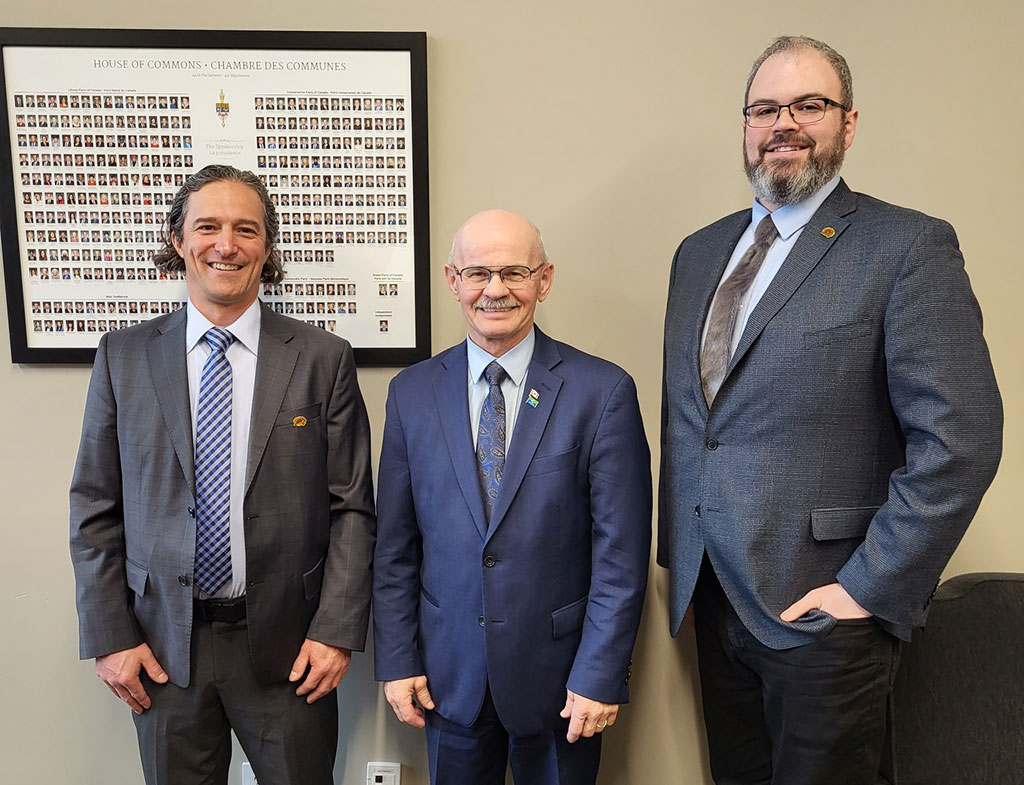
Given that the fur sector was, until quite recently, worth more than $1 billion to the Canadian economy, it is unsurprising that we enjoy strong support among politicians at all levels of government. But what is surprising is that there is no one department within the federal government dedicated to providing a home base for the entire fur trade, and acting as our Champion.

Such a department would advocate for the fur trade at internal government talks, and just as importantly, point folks in the trade towards the right decision-makers and appropriate pots of funding to support new initiatives for fur.

After a long day with many meetings, we held a reception for Parliamentarians and friends of fur from Ottawa and the surrounding area. But this wasn't just a chance to wind down and relax.
Rather, it was an important opportunity to let Parliamentarians meet others from the fur trade, while also giving them a chance to appreciate the unique feel and beauty of natural fur.

To this end, our reception featured a display of fur garments, home décor, and pelts. Most of the garments and décor were provided courtesy of Rob Cahill of Cahill's Furs in Peterborough, from his Further Upcycled line. And FIC Board member Robin Horwath, who was also formerly General Manager of the Ontario Fur Managers Federation, showed dressed pelts of the various furbearers harvested across his province.

Fur Day on the Hill has just taken place for the first time in five years, and that's far too long. It was always intended to be an essential part of the FIC's lobbying efforts on Parliament Hill, on behalf of the entire fur sector.

For this reason, it is my hope that Fur Day becomes an annual event, as we strive to bring the full power of the federal government behind the fur sector, where it belongs.
The proposed fur ban in Rhode Island has been defeated. The bill, HB7361/SB246, which, if passed, would have banned the…
Read More

The proposed fur ban in Rhode Island has been defeated. The bill, HB7361/SB246, which, if passed, would have banned the retail sale of fur, was defeated last week when the Rhode Island legislature convened.
Even in light of the industry being outspent by the Animal Legal Defense Fund, the Humane Society and other groups, as well as a digital campaign and the overwhelming support the bill received in the house, it was not enough to get the bill passed.
SEE ALSO: US legislators should be promoting natural fur, not seeking to ban it. Truth About Fur.
Dino Quaglietta of Northeast Furs, a local retailer in Warwick, has been engaged in fighting the ban since it was first proposed. Upon learning of the ban’s defeat, Quaglietta said, “It’s great that we won, for sure! It was a hard-fought battle. Good news for Rhode Island, but outside of the industry, who knows about this?
“The industry needs to band together and get on the offensive. We need a spokesperson to get the word out to the public, not just talk to ourselves. We must convey all the positives of fur and show the public that animal welfare includes all animals and point to the hypocrisy of this movement; that putting on a fur coat is no different than putting on a pair of shoes.
“The industry has had so much negative press, we must do damage control to get to the minds of our customers. This is a quintessential freedom of choice issue. This bill will come up again next year when we’ll have to fight it again. At least we got through this year.”
The International Fur Federation-Americas, who spearheaded the fight, will continue to be engaged in Rhode Island with the unwavering support of Quaglietta and Northeast Furs.
Similar bills have been defeated in Connecticut, Massachusetts and New York – in both the House and the Senate.
SEE ALSO: “Fur Fights Back!” It’s time for a strong industry communications campaign. Truth About Fur.
***
To learn more about donating to Truth About Fur, click here.
Fur is under attack like never before. Hardly a week goes by without news of some brand dropping fur, or…
Read More

Fur is under attack like never before. Hardly a week goes by without news of some brand dropping fur, or a jurisdiction proposing to ban its production or sale. This tsunami of negativity fuels a self-reinforcing cycle: As major retailers (Saks, Neimans, Holt Renfrew) stop selling fur, successful brands (Canada Goose, Moose Knuckles, Mackage) have less incentive to stand up to relentless activist pressure – and, with less business at stake, it becomes harder for politicians to resist activist pressure for production or sales bans. Worse, the barrage of negative news can create the false but potentially self-fulfilling impression that “society” has decided it is no longer ethically acceptable to wear fur.
This cycle of negativity cannot be broken with the fur trade always on the defensive. Our rational and reasonable responses to fur ban proposals or fur-free brands – if we get a chance to respond at all – are buried deep in media reports where few people see them.
Two proactive fur trade initiatives are the International Fur Federation’s sustainability and FurMark campaigns. Both programs include important communications and consumer-reassurance tools. But, alone, they are not enough to push back the tsunami now engulfing our industry.
What is desperately needed is a bold strategy to move the North American fur industry off the back foot and into attack mode. We must aggressively reclaim control of our own story, to support designers, retailers, and politicians – and to give consumers the “social license” to buy and wear fur.

For much of the 20th century, movie stars and other celebrities provided an extraordinary media profile for the romance and glamour of fur. But while Jennifer Lopez, Madonna, Rihanna and other celebs continue this tradition, many others now choose to avoid the controversy that activists have created around fur. We can’t expect celebs, or brands, or anyone but ourselves to fight our battles.
A major challenge for the fur industry, of course, is that we lack the human and financial resources required to mount the large-scale advertising and PR campaigns that bigger industries use to manage such problems. Instead, we should take a leaf from the activist handbook: We must start using the news media to carry our messages, by providing “stories” that journalists cannot resist.
PETA president and co-founder Ingrid Newkirk once said: “We’re media sluts. We didn’t invent the game, we just learned to play it.” PETA understands that the media are content-devourers. Journalists need stories, lots of stories, the more sensational the better, and activists learned to provide them.
It’s time for the fur trade to generate more newsworthy stories of our own. And because the fate of the fur industry does not interest most people, the trick is to show how anti-fur campaigns actually threaten the interests and welfare of Joe (and Josie) Public.
The good news is that a strong “Fur Fights Back” campaign can become a media story in itself. This approach was road-tested when we launched Furisgreen.com, a decade ago. We “seeded” the campaign with some billboards in major cities and a few paid ads in national papers, and the phone began ringing. Our claim that “fur is green” was so unexpected, that it was “news”. (Note: “Fur is Green” is now a registered trademark in Canada and the US, belonging to the Fur Council of Canada.)
The thing to understand is that it’s not the media’s job to broadcast our messages, no matter how intelligent or worthwhile they may be. Their job is reporting “news”. If we package our messages into a “campaign” that provides a new perspective on a controversial and timely issue, the media will report on it – especially if we include an emotional element. And remember: despite how discouraging media coverage of our issues can be, most journalists are not animal activists. Activists have just done a better job playing the media game.

So what kind of fur stories might be exciting enough to be considered “newsworthy” by journalists? Here are a few ideas to start the ball rolling:
1. Anti-fur campaigns undermine wildlife management programs that protect property, livestock, and human health. Wildlife biologists and trappers should warn the public that over-populated raccoons (and other species) can spread rabies and other dangerous diseases. Increasingly abundant coyotes prey on livestock, pets – and now sometimes even attack humans. Over-populated beavers can flood homes, roads, and natural habitat. Raccoons, foxes, and other predators kill ground-nesting birds, sea turtle eggs and young, and other endangered species. The truth is that wildlife populations will still have to be managed, even if we don’t use their fur. (Does a child have to die from a rabid raccoon bite before the important role of trappers is recognized?) If activists succeed in destroying consumer markets, then tax-payers will end up footing the bill for managing wildlife. Without the market incentive provided by companies like Canada Goose, for example, governments will have to reinstate bounties to manage coyote populations – as they did not so many years ago. So coyotes will still be killed, but they will be left to rot in the woods and the fur will be wasted. Is this really a more ethical treatment of wildlife?
2. Campaigns against mink farming are an attack on rural communities, the people who feed and clothe us. Mink farmers should encourage mainstream agriculture – including vets and scientists – to denounce the current attack on mink farming as the thin edge of an orchestrated activist campaign to undermine family farms and animal agriculture. The same activist groups that have long targeted the fur trade are now openly campaigning against eating meat and wearing leather and wool. While calling for full veganism, they also push for “reforms” that raise costs for farmers, to make animal agriculture less viable – but it is consumers who will pay the higher prices for meat, eggs, dairy, and other animal products. Mink farming is a small sector but plays a key role in the agricultural cycle: recycling wastes from other sectors (the parts of pigs, chickens, and fish that we don’t eat), while composted mink farm wastes provide valuable organic fertilizers to restore the fertility of the soil, completing the agricultural nutrient cycle.
3. Anti-fur activists use Mafia “protection racket” tactics of harassment and intimidation to force brands and retailers to drop fur: “Do as we say or we will destroy your business!” This should be a concern to anyone who believes in democracy. Canada Goose and other brands are not dropping fur because consumers don’t want to buy and wear these products; our cities are full of young people wearing fur-trimmed parkas each winter. These companies stop using fur because store security and brand reputation costs become too high. Is this the kind of society we want, where aggressive minorities impose their beliefs with intimidation? Surely we all have a right to make our own decisions about the appropriate use of animals. This is not a “fur issue”; it is an issue that should concern all citizens, journalists, and politicians, whatever their feelings about fur!
4. Anti-fur campaigns threaten our health and undermine efforts to develop “greener” economies. The apparel industry is the second-biggest contributor to pollution and greenhouse gas emissions. As the fashion industry confronts the tremendous waste caused by throwaway “fast fashion”, environmentalists say we should be buying less but better-quality clothing, and keeping it longer. Seen in this perspective, using fur makes more sense today than ever! Fur is, in fact, an excellent example of the responsible and sustainable use of renewable, natural resources, as promoted by the World Conservation Strategy. Where are activist campaigns leading us? Sixty percent of our clothing is already made from non-renewable, non-biodegradable petrochemicals; we now know these clothes shed vast quantities of micro-particles of plastic into our air and waterways – plastics that are now being found in marine life, and even in foetuses and breast milk. Cruelty-free indeed!
5. Anti-fur campaigns are insulting and unfair to people who live closest to nature: thousands of farm families, First Nations and other trappers, skilled fur artisans maintaining unique heritage craft skills, and many others. Activist campaigns are not a victimless crime! They attack the livelihoods, cultures, and reputations of real people – people who work hard and do not have the time (or inclination) to perform media stunts for publicity! These are decent people with families – not the monsters they would have to be if the things activists say about the fur trade were true. The sensationalist lies that activists shamelessly spread about the people of the fur trade would not be tolerated if any other race, religion, or lifestyle were so viciously targeted. Simply put: animal extremists have degenerated into politically-correct hate groups, with the people of the fur trade as their number one scapegoat. But intolerance and bullying are never cool; it’s time that anti-fur activists were called to account for their hate-mongering.

Each of these “stories”, and others, should be delivered by the most credible and well-trained spokespeople we can find in the industry: First Nations and other trappers, farm families, skilled craftspeople. Women should be well represented, and young people who know how to get our stories out on Instagram and TikTok!
We should also remember that emotion trumps logic in the media. Activists have exploited this well, but fur people have emotions too. Activist campaigns are unfair and insulting to real people. They put people’s livelihoods and cultures at risk. And when they prevent trappers from responsibly managing wildlife, they put public health and safety at risk as well!
Not least important, anti-fur campaigning works against current efforts to improve sustainability in the apparel industry. And activist bullying tactics threaten democracy and our right to make our own ethical choices. These are not just fur issues, these are issues that should concern everyone who believes in a free and open society.
As this brief summary shows, the current attack on the fur industry is an attack on a range of important societal values and interests. But no one else will tell these stories if we don’t. It’s time for a coordinated fur industry communications strategy.
***
To learn more about donating to Truth About Fur, click here.
Animal rightists have been badgering the UK government to ban the fur retail trade for years, and with their country…
Read More

Animal rightists have been badgering the UK government to ban the fur retail trade for years, and with their country now out of the EU and no longer bound by its laws, the government is seriously considering giving them what they want. Such a precedent would give a major boost to animal rights activists lobbying for similar restrictions in other European countries, and even the US and Canada. So while the UK may not be a major consumer market, it is imperative that anyone who supports the responsible use of animals should now take action to ensure that a UK fur-sales ban doesn't happen.
Of course, it's easy to feel jaded when it comes to the UK, and even write it off as a lost cause. After all, despite a long and noble history of championing responsible animal welfare, this tiny island is now a breeding ground for virulent animal rightists, right up there with California. Plus, few British people wear fur anyway, so does it really matter?
The answer is yes, it matters. Courtesy of its language, its history, the Beatles, and a host of other factors, the UK's influence on global trends is unquestionably profound. If the British decide to ban fur retail sales, animal rights campaigners will surely hold it up as a model for other countries – and their legions of Anglophiles – to follow.
The danger is especially evident when we consider who now has the ear of Prime Minister Boris Johnson. On May 29, he married Carrie Symonds. Who is Ms. Symonds? Well, for one thing she believes that "Anyone that wants to buy fur really is sick." She was also PETA UK's 2020 Person of the Year. And she's sleeping with the PM...
Now for the "good" news. Rather than just diving in head first with a ban, the government's Department for Environment, Food and Rural Affairs (DEFRA) is testing the water thoroughly first. This it is doing by inviting everyone – including foreigners – to partake in a "call for evidence", with a deadline of June 28. The process is easy too: just click on DEFRA's online questionnaire and let your voice be heard. And as an added bonus, it will send you a link to download a PDF of your responses once you're done.
(Note: Don't be confused by the questionnaire's reference to Great Britain, rather than the UK. GB refers to England, Scotland and Wales, as the other UK member, Northern Ireland, remains in the EU Customs Union and will be unaffected by a ban.)
The questionnaire is also refreshingly different from previous polls on the fur trade. Rather than asking how we feel about fur, with multiple choices ranging from "Strongly approve" to "Strongly disapprove", almost all the 39 questions are looking for solid information. And there's something for everyone, so ignore the ones that don't apply, and let rip on the others.
Question 11, for example, is for ranting, if you so choose. "What is your attitude towards the import and/or sale and/or export of fur or fur products in GB?" it asks. TAF, however, opted for restraint, given our status as a voice for the trade. "It's a legal, regulated activity that should be allowed to continue," we wrote. "The government should always be vigilant about sources of fur to ensure only fur that is harvested humanely exists in the marketplace. However, it would be overreach on the part of government to ban all trade in fur, as this would be forcing the views of one sector of society on everyone. The UK is supposed to be a democracy in which everyone's views are respected. Banning fur would be a move in the wrong direction."
SEE ALSO: The Fur Truth: How a UK fur ban would damage and set back animal welfare. British Fur Trade Association.
Then there are a few "fun" questions to test your knowledge, like Question 12. "Other than for clothing and apparel, what uses of fur should we be aware of?" TAF came up with the obvious furnishings like pillows, rugs, etc., and the always-overlooked use of fur in fishing flies. Are there others DEFRA should know about? Are the markets for mink eyelashes and calligraphy brushes too small to mention?
Of course you might also find a couple of questions rather stupid, like Question 27: "What do you consider to be the total value (in £ sterling) of imports to and exports from GB in relation to (i) raw furskins; (ii) tanned or dressed furskins; (iii) articles of apparel and clothing; (iv) artificial fur?" We suggest a politely worded response like, "Look them up yourself. The UK government – which you represent – publishes these stats. It is irrelevant what anyone 'considers' them to be."
And then there are some great questions, including Question 38, which is just perfect for North Americans. Asks DEFRA, "We are interested in finding out more about other countries’ existing or planned restrictions on fur. Please provide any information and/or evidence that you are aware of."
Of course, TAF went to town describing the divisive, arbitrary, and counter-productive nature of fur retail bans in the US, especially in California. If you don't already know our myriad objections, here is just a sampling:
US legislators should be promoting natural fur, not seeking to ban it. April 22, 2021.
There's no justification for banning the sale of fur. February 17, 2020.
Fur industry sues San Francisco. January 15, 2020.
Fur ban proposals are based on a dangerous fiction. September 25, 2019.
6 reasons why banning fur sales is a very bad idea. April 11, 2019.
So whether you think it will make a difference or not, please do take the time to fill out this questionnaire. Because, as sure as the sun rises each day, animal rights groups will be giving it their full attention.
And as your parting shot, here's an idea for your answer to the final question, number 39. DEFRA asks: "Please provide any other relevant evidence you would like to include to inform decisions on the GB fur trade." TAF took the high road, and referred the UK government to our website. But we were sorely tempted to write, "We are concerned that Prime Minister Boris Johnson may be swayed by the fact his wife is rabidly anti-fur. Can DEFRA assure us that Mrs. Johnson will not unduly influence government policy going forward?"
***
To learn more about donating to Truth About Fur, click here.
A troubling new trend among progressive legislators in the US is to virtue signal by proposing to ban the sale…
Read More
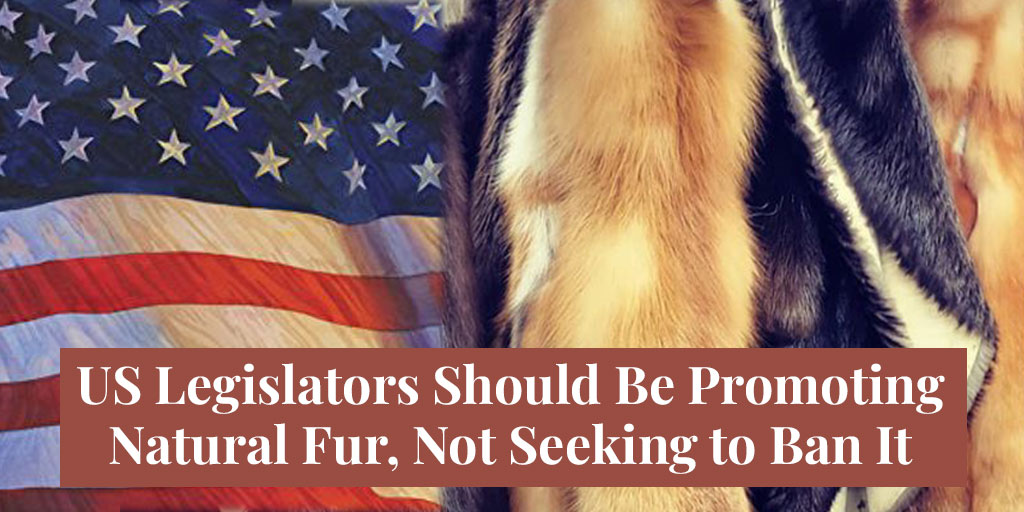
A troubling new trend among progressive legislators in the US is to virtue signal by proposing to ban the sale of natural fur products. Apart from the question of whether it is appropriate for government to legislate such personal choices, even a quick review of the facts suggests that progressives should be promoting natural fur, not seeking to ban it.
Unfortunately, the sponsors of recent fur-ban proposals in Massachusetts, Rhode Island, and several other states have clearly not bothered to do their own research. Instead, they just parrot animal activist inaccuracies and even lies.
Take, for example, a House bill in Rhode Island, H 7483, and a House bill, H.965, and Senate companion, S.623, in Massachusetts. All three bills use the exact same language in claiming that farm-raised mink “endure tremendous suffering”, despite the fact this simply isn't true. North American farmed mink receive excellent nutrition and care, not just because it's the ethical thing to do, but also because it's the only way to produce the high-quality fur for which North America is known. Standards for pen sizes and handling farmed mink are developed by veterinarians, animal scientists, and animal-welfare authorities.

Fur-ban supporters are also guilty of scaremongering about the susceptibility of mink to Covid-19, claiming that mink farms are a threat to public health. Strict bio-security measures in place on all North American mink farms are one reason the Centers for Disease Control and Prevention can state: "Currently, there is no evidence that mink are playing a significant role in the spread of SARS-CoV-2 to people."
As for the fear that a virus strain that showed up on mink farms in Denmark will lower the efficacy of vaccines, America's top infectious disease official is not too worried. "[A]t first cut, it doesn't look like something that's going to be a really big problem for the vaccines that are currently being used to induce an immune response,” said Dr. Anthony Fauci, who was Chief Medical Advisor under President Trump and has stayed in the role under President Biden.
Bear in mind also that when there are outbreaks of swine flu (H1N1) or avian flu in chickens, we do not ban the sale of pork and poultry – although this is exactly what animal activists call for. Instead, farmers work closely with public officials to resolve the problems, just as US mink farmers have done with Covid-19.

Fur-ban proponents also refuse to acknowledge the many positives of producing and wearing fur.
For example, they ignore the fact that farmed mink, as carnivores, eat by-products from human food-production – the parts of cows, pigs and fish that we don’t eat, expired cheeses, broken eggs – that might otherwise end up in landfills. Manure, soiled straw bedding, and other farm wastes are composted to produce organic fertilizers, completing the agricultural nutrient cycle. And mink are raised on family-run farms, providing employment and revenue to support rural communities.
They also fail to mention that half the fur produced in the US is taken from the wild, and from abundant species only. This way they avoid the awkward truth that many of these furbearers are so numerous that they'd have to be culled even if we didn't use their fur. Overpopulated beavers flood homes and roads; raccoons spread rabies and other dangerous diseases; coyotes are the main predators of young calves and lambs, and even pet dogs and cats; and the list goes on. Regulated trapping, as practiced in the US, helps to maintain more stable and healthy wildlife populations by smoothing out boom-and-bust cycles. And if we must cull some of these animals, it is surely more ethical to use their fur than to throw it away.
SEE ALSO: The ethics of fur. Truth About Fur.
Finally, it is grossly misleading for fur-ban proponents to claim that alternative materials render the use of natural fur “unjustifiable”. Fake furs – and more than 60% of all our clothing – are synthetics, mostly made from petroleum, a non-renewable resource. We now know that each time these synthetics are washed, they leach micro-particles of plastic into our waterways that are now turning up in marine life, drinking water, and even breast milk. Cruelty-free indeed!
Natural fur, by contrast, is produced responsibly and sustainably. Each fur garment is cut and sewn individually by artisans maintaining heritage handcraft skills. A well-made mink coat can be worn for 30 or 40 years or more, passed from mother to daughter and granddaughter. Unlike most clothing, a natural fur coat can be taken apart and completely restyled. And after decades of use, it can be thrown into the garden compost where it will biodegrade completely. Using natural fur makes more sense than ever at a time when environmentalists are saying we should buy better-quality clothing and keep it longer.

So why do we hear so much anti-fur rhetoric? Despite its “luxury” image, the fur trade – from farmers to trappers to craftspeople -- is a small and artisanal industry that has been unfairly stigmatized and scapegoated. The fur trade is easily sacrificed by politicians bent on winning votes and raising funds, in the knowledge that it simply doesn't have the resources to compete with multi-million-dollar, media-savvy, “animal rights” lobby groups.
No one is obliged to wear natural fur – or, for that matter, wool or leather – or to eat meat or dairy. These are personal choices, and they are rarely black and white. For example, despite the growing popularity of vegetarianism, few of us actually go the whole nine yards, let alone become vegans. Instead, we may opt to become pesco- or ovo-vegetarians, meaning we still eat seafood or eggs. Others choose to buy organic beef, or free-range eggs.
As we navigate these choices, we want more information about the environmental and ethical implications of our decisions. In response, the International Fur Federation is launching FurMark this year to further enhance traceability and transparency about industry standards.
What is not appropriate is for legislators to impose such decisions from on high. Rather, it behooves them to actually meet with the people whose cultures, reputations, and livelihoods they are so blithely and unfairly attacking. Politicians who fancy themselves to be progressive may then find that they should be promoting natural fur, not seeking to arbitrarily ban it.
***
To learn more about donating to Truth About Fur, click here.
The following statement from the four signatories below was released to the media on Jan. 24, 2021. “Harvesting and trading…
Read More

The following statement from the four signatories below was released to the media on Jan. 24, 2021.
"Harvesting and trading fur and other gifts of nature is our inherent right since ancient times, not a privilege to be bartered or revoked!" says Chief Brian Wadhams, trapper, of the 'Namgis First Nations.
As Indigenous trappers and traditional trapline holders, we can no longer remain silent about self-appointed “animal rights” activists who think they have a right to spread lies about the fur trade and call on politicians to ban the production or sale of fur products.
The latest example of this vicious and misleading campaigning is a recent call by animal activists for the Canadian Government to ban mink farming, after mink on two BC farms tested positive for COVID-19. While mink farming is not a tradition in our culture, we oppose this attack on small family-run farms and on rural communities where the majority of Indigenous harvesters live. And we are not naïve: we understand that this attack on mink farming is just the latest weapon in an orchestrated plan to turn the public against any use of fur – a campaign that directly attacks our culture and inherent rights as Indigenous peoples of Canada. We call this for what it is: Cultural Genocide.

The fur trade played a central role in Canada’s history, and it's an important part of our Cultural Identity; our people were harvesting and trading furs long before Europeans ever set foot on our eastern shores. The harvesting and sale of fur still provides income for many First Nations communities throughout Canada. Beavers, muskrats, and other furbearing animals also provide nutritious food for many hunters and their families. The respectful harvesting of fur and food from abundant wildlife populations is central to our relationship with the land – a relationship that the federal and provincial governments are legally mandated to protect.
Let us be crystal clear: the goal of animal activists – including those now calling for a ban on mink farming – is to destroy all markets for fur, to further their own ideological agenda. In doing so, they are directly attacking our right to responsibly harvest and trade nature’s gifts, which is our inherent right, a right recognized by the Supreme Court of Canada and by the United Nations Declaration on the Rights of Indigenous People (UNDRIP).
It is doubly unfortunate that animal activists seek to mislead the public and the government about fur at a time when Canadians seek to live in better harmony with nature. Furs are a sustainably produced, long-lasting, and biodegradable natural clothing material. It is the Honest Fabric. By contrast, the fake furs and other synthetics promoted by animal activists are generally made from petroleum, a non-renewable, non-biodegradable, and polluting resource.
Indigenous people have respected and protected the survival of the animal populations upon which we depend since time immemorial. Our message today to self-appointed “animal rights” extremists and their celebrity cheerleaders is this: Your misguided attacks on the fur trade are not “progressive”; they are attacks on Indigenous people. Your uninformed and misguided lies must stop NOW!

We take this opportunity to remind the Government of Canada, and their provincial and municipal counterparts, that fur trapping, trading, displaying and selling fur is our Inherent Right, not a privilege to be bartered or trifled with. You are responsible for protecting these rights!
Furthermore, governments cannot make any changes in policy or legislation concerning the responsible harvesting, production, displaying, selling or bartering of fur products without full consultation and consent from Indigenous people, as the Supreme Court of Canada has ruled.
We will no longer remain silent while self-appointed urban activists attack our cultural traditions and livelihoods. It is time you showed some honesty, decency, and respect for Indigenous fur harvesters and our fur trade partners.
It's time to take a stand. We call on all Canadians to say “No!” to the lies and cultural intolerance promoted by anti-fur groups. We ask you to support Indigenous harvesters, to support the responsible and sustainable use of nature's gifts -- and to buy and proudly wear Canadian Fur.
Thank you.
Signed by Indigenous Fur Trappers & Supporters.
• Chief Roy Jones, Haida Gwaii First Nations.
• Chief Brian Wadhams, trapper, 'Namgis First Nations.
• Karen Dunstan, Lytton First Nation member, trapper, and director of the BC Trappers Association.
• Thomas Sewid, Kwakwaka'wakw / Cree, Pacific Balance Marine Management.
***
To learn more about donating to Truth About Fur, click here.
It’s the Holiday Season, a time of good cheer, so let’s pretend for a moment that Covid-19 hasn’t made the…
Read More

It’s the Holiday Season, a time of good cheer, so let’s pretend for a moment that Covid-19 hasn’t made the last year thoroughly miserable for everyone, including the fur trade. After all, every cloud has a silver lining, right? What follows may seem like a stretch, but not everything about 2020 was bad.

Let’s start with something that didn’t happen in 2020: if there were any new campaigns launched to ban fur retail in the US, Truth About Fur didn’t hear about them. This bore out a prediction we made last March that, with the pandemic building, no one would have time to argue about animal rights.
Before the pandemic, animal rights groups were on a roll in California. They started small, in trendy West Hollywood, where a retail ban went into effect in 2013. Then Berkeley fell in 2017, San Francisco’s ban began last January, and a Los Angeles ban starts in 2021. In 2023, California’s statewide ban is scheduled to begin. (The sad irony, of course, is that the politicians who supported these bans pride themselves as being "progressives" -- in which case, as Truth About Fur's Alan Herscovici explained, they should be promoting fur, not trying to ban it!)
Activists tried the same tactics in New York City (and state) in 2019, but stalled in the face of stiff opposition. And, just before the pandemic reached the US, they were targeting Minneapolis.
The fur trade mounted challenges to all these campaigns -- and legal challenges forced San Francisco to acknowledge that furs can still be purchased by mail order in that city -- but putting out fires left and right is expensive and time-consuming. Then Covid-19 came and stole the show, ably supported by such explosive events as the Black Lives Matter riots and the US election. Any interest in talking up fur sales bans evaporated, and they remain irrelevant to this day.
It won’t last, of course. Once Covid is under control and there’s a slow news day (remember those?), animal rights extremists and attention-hungry politicians will be teaming up again. But until then, the fur trade can take a breather and regroup. It’s not much of a silver lining, but a breather was definitely needed!

It’s never nice to benefit from another’s misfortune, but it happens in business all the time. Now the world’s largest exporter of mink has been struck down, and other producers -- especially in North America -- stand to gain.
In November, the Danish government ordered the culling of the country’s entire mink herd – believed to be about 14 million animals according to insiders, not 17 million as widely reported – after a mutation of the coronavirus was found that, some feared, might reduce the efficacy of a human vaccine. The government has admitted it had no legal authority to order the cull, and the threat posed by the mutation has been questioned (not least because it hasn’t been seen since September). But the cull went ahead anyway, and the Danish government has forbidden further breeding in that country until 2022.
SEE ALSO: With proper precautions, mink farms don’t pose Covid-19 risk. Truth About Fur.
It’s still unclear whether Denmark’s mink industry is really finished, but Kopenhagen Fur, the world’s largest auction house whose main supplier is the Danish Fur Breeders’ Association, seems to think so. “It is a de facto permanent closure and liquidation of the fur industry,” said chairman Tage Pedersen, who predicted 6,000 lost jobs -- including more than 1,100 farm families. The auction house has said it will clear reserve stocks while implementing "a controlled shutdown over a period of 2-3 years."
So what’s the silver lining here? Well, if the Danish industry is truly over, as Pedersen suggests, the next few years should see a significant drop in supply and, consequently, rising prices. In particular, North America's mink farmers should benefit since their fur pelts are widely considered to be the world’s finest, though its chief rival, Denmark, produced far more. Other fur types, like fox, may see a rebound too as garment makers look for alternatives.
In fact, Saga Furs, in Finland, may have shown a glimpse of the future on Dec. 15 when it concluded its first international auction – online, of course -- since the Danish cull. Summarizing the results for Truth About Fur, a representative said that almost all (90%) of the one million mink on offer were sold “at overall prices up by 50% since last auction, with North American mink sold at a premium. China, with support from Italy and Turkey, were the main buyers, with multiple bids per lot. Blue foxes were also up, by 17%, and shadow foxes up 10%.”
The mink-farming sector now has an unexpected opportunity to reset its output. Until 2013, when prices were peaking, many observers feared rapidly escalating over-production. Both prices and production have fallen since then, but with Denmark out of the picture, we could see a leaner, meaner, and more profitable industry with world production more closely aligned with actual demand. Of course, farmers in other countries might just ramp up production to fill the shortfall. But with prices still barely covering production costs (if that), and the current uncertainty in retail markets, it is unlikely that mink production will return to recently-seen levels any time soon.
Personally, I find it hard to believe Denmark’s mink industry will roll over and die so easily. But its production will, at the very least, take a major hit in the short- to mid-term. And therein, sad as it may be, lies a silver lining for most everyone else.

Last but not least in our doggedly joyous roundup of 2020, there’s the North American auction scene. After the biggest player bowed out, a period of great uncertainty ensued as others jockeyed to take up the slack. They haven’t quite sorted themselves out yet, but the good news is that a number of strong options have already emerged.
Until late last year, North American Fur Auctions was, by far, the continent’s largest fur auction house. Based in Toronto with facilities in Wisconsin and elsewhere, NAFA was North America's leading marketer of both farmed and wild fur. This dominance was assured in 2018 with the collapse of its Seattle-based competitor, American Legend Cooperative.
And then it all came unglued. On Oct. 31, 2019, NAFA was granted creditor protection, leaving many fur farmers wondering how to sell their furs – or, for that matter, what would happen to furs already consigned to -- or sold by -- the auction house.
The auction scene is still in flux, with news that New York-based American Mink Exchange will be selling in collaboration with Fur Harvesters Auction in North Bay, while Saga Furs is also poised to play a stronger role in North America. Meanwhile, Fur Harvesters Auction -- a cooperative venture of First Nations and other trappers -- is gearing up to greatly expand its wild fur offerings, while Illinois-based Groenewold Fur & Wool Co. has stepped up its presence in Canada. Other projects are also rumoured to be in the works.
In the meantime, the silver lining of NAFA’s demise is that there seems to be no shortage of parties ready to take its place. Imagine if no one had wanted the job! But if there are two words that describe the people of the fur trade, they are "tenacity" and "adaptability". Let's see how they play out in 2021!
***
To learn more about donating to Truth About Fur, click here.
The Israeli Government recently announced that permits for the importation, fabrication or sale of fur will no longer be issued,…
Read More

The Israeli Government recently announced that permits for the importation, fabrication or sale of fur will no longer be issued, except for religious, scientific, or educational purposes. In short, the fur business will be effectively banned by regulation, by-passing the normal legislative process that was tried -- and failed -- a decade ago. This short-circuiting of due process is justified because banning fur is a moral issue, claims Minister of Environmental Protection Gila Gamliel. "Utilizing the skin and fur of wildlife for the fashion industry is immoral,” she insists. But she's so wrong.
What does it mean to say that using fur – or any other animal product -- is “immoral”? Some of the best research into public attitudes about using animals was done by the Canadian Royal Commission on Seals and Sealing. Based on opinion polling in six Western democracies (the UK, France, Germany, Norway, Canada, and the US), the Commission determined that four criteria must be met for animal use to be considered morally acceptable. Let’s see how the modern fur trade measures up to these four criteria:

For animal use to be considered morally acceptable, it must not threaten the survival of the species. So it’s important to know that all the fur used today comes from abundant populations, and never from endangered species.
Eighty percent of fur is produced on farms, so there's no threat to wildlife there.
The remaining 20% -- the wild fur trade -- is strictly regulated in North America by states and provinces, and internationally under the Convention on International Trade in Endangered Species, or CITES. These laws and regulations ensure we are using only part of the surplus that nature produces each year, because beavers, muskrats, martens, raccoons, and other furbearers produce more young than their habitat can support to adulthood.
The regulated fur trade is, in fact, an excellent example of “the responsible and sustainable use of renewable natural resources”, as promoted by the International Union for Conservation of Nature (IUCN).

The second criterion for moral acceptability is that the animals we use should suffer as little stress or pain as possible. The modern fur trade takes this responsibility very seriously.
In Canada, mink and fox farmers follow codes of practice developed under the auspices of the National Farm Animal Care Council (NFACC), with veterinarians, animal scientists, and animal-welfare authorities. Other countries have similar production codes, and farmers have every reason to follow them, because the only way to produce high-quality fur is to provide optimal nutrition, housing, and care.
Animal welfare is also a priority in the wild fur trade: Canada has been a world-leader in humane trapping research and innovation since the 1970s. This research, coordinated by the Fur Institute of Canada, has resulted in improved trapping systems, trapper training, and regulations, and the Agreement on International Humane Trapping Standards.
Activist claims about fur animals being “skinned alive” or otherwise mistreated have been thoroughly and repeatedly debunked.
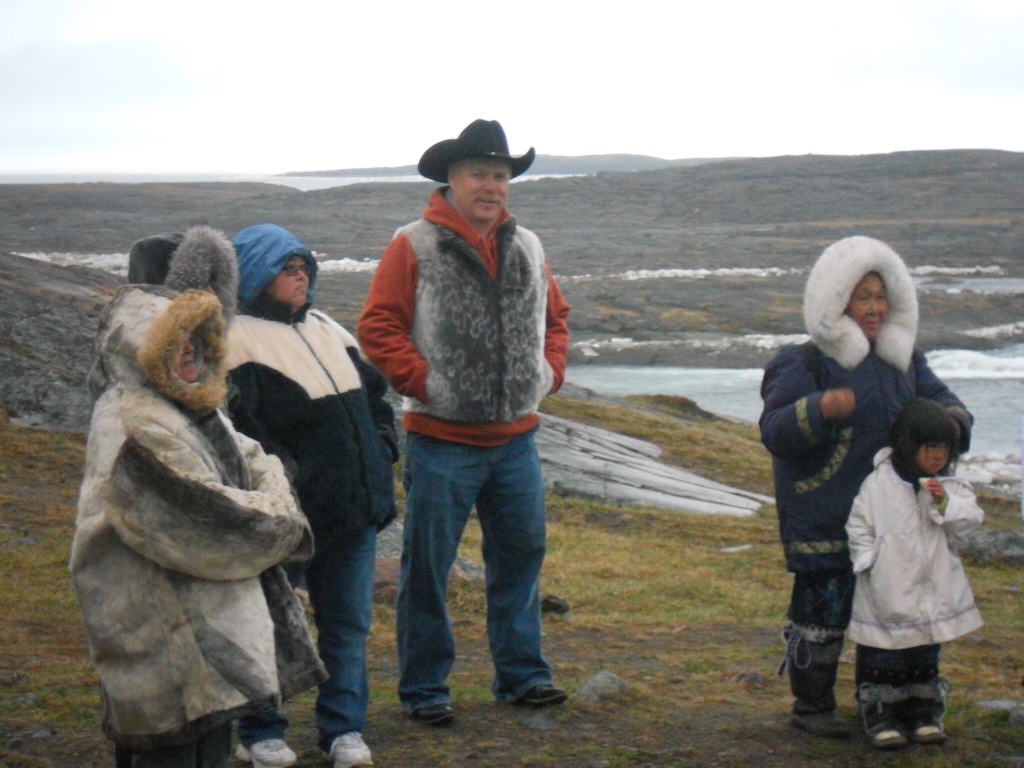
A third moral criterion revealed by the Royal Commission is that animals should not be killed for “frivolous purposes”. This argument is at the core of much anti-fur campaigning, and is echoed by Gamliel in her assertion that it is immoral to kill animals “for fashion”.
Gamliel conveniently ignores the fact that animal-rights activists now openly oppose any use of animals, even for food. But to address the point at hand, humans have to wear something, and there is nothing frivolous about our need for long-lasting, eco-responsible clothing.
The fake furs and other synthetics promoted by animal activists are usually made from petroleum, a polluting, greenhouse gas-producing, non-renewable and non-biodegradable material. We now also know that these synthetics (which represent 80% of our clothing) leach nano-particles of plastic into our waterways each time they are washed, plastics that are now being found in the digestive tracts of marine life and even our drinking water. Cruelty-free indeed!
Fur, by contrast, is a long-lasting, renewable, recyclable, and ultimately biodegradable natural clothing material. So wearing fur is not so frivolous after all, especially at a time when we are trying to develop more sustainable lifestyles.

The fourth criterion for moral acceptability is that when an animal is killed to benefit humans, there should be no waste. This is why most people - animal-rightists excepted - consider it morally acceptable to use leather, because it’s the envelope that dinner came in. We ate the meat, so why not wear the skin?
All too often, however, people fail to understand that fur also respects this "no waste" principle.
In fact, farmed mink and fox help to reduce waste in our food production system, by consuming the parts of cows, chickens, pigs, and fish that humans don't eat. Furthermore, the manure, soiled straw bedding, and carcasses of farmed mink and fox are composted to produce organic fertilizer, returning nutrients to the soil and completing the agricultural cycle.
Meanwhile, beavers, muskrats and other wild furbearers provide food for trappers and their families, or are returned to the bush to feed other animals through the long, cold winter. Nothing is wasted.

If Minister Gamliel were to honestly apply the criteria above, she would have to acknowledge that the modern, well-regulated fur trade is as morally responsible as other commonly accepted uses of animals in our society, for food, clothing and other purposes.
And there are other serious problems with her "immorality" argument.
In North America (and other regions) where wild furbearers actually abound, populations have to be managed whether we use the fur or not. Overpopulated beavers flood farmland, roads, and homes; raccoons and foxes become more susceptible to rabies and other dangerous diseases; coyotes prey on livestock and are now taking pets in urban areas; and the list goes on. But if some of these animals must be culled to protect property and health, is it "immoral" to use their furs? Quite the opposite, in fact. The immoral deed would be to throw those furs away.
Meanwhile, Gamliel faces some moral dilemmas on her own doorstep, because her proposed ban would exempt furs used for “religious purposes”. Obviously her intent here is to neutralize opposition from ultra-orthodox coalition partners, whose haredi men wear large fur hats, or shtreimels, on the Sabbath and other Holy Days. But these hats don't reflect any true religious practice; actually, they are rooted in 17th-century Eastern European fashion. Gamliel's exemption is driven solely by political expediency. So much for moral imperatives!
Then there's the inconvenient fact that the sacred Torah – the very heart of Judaism – is written on parchment, which is an animal pelt with the hair scraped off. Similarly, the prayers scrolled inside the mezuzot that grace every door of a Jewish house are also written on animal hides.
But what of the Jewish doctrine of bal tashchit – “do not destroy”, which is often cited by animal activists in Israel? In fact, bal tashchit is derived from a commandment in the Torah to not destroy fruit trees outside the walls of a city under siege. It is a recognition that people will need food, no matter who wins, and is one of the world’s first written environmental protection laws. It promotes responsible use and sustainability. But it certainly does not command us to abstain from using animals to meet human needs.

In light of all the above, it is clear that Gamliel's proposal to ban fur has nothing to do with morality. Rather, it is just politically expedient virtue-signalling to curry favour with Israel's strong animal-rights lobby, while the financial cost is born by farmers and trappers half a world away.
Apart from streimmels, there is little fur trading in Israel, which is why international animal-rights groups have identified it as an easy target, a thin edge of the wedge. But if one country should understand the dangers of embracing calls for scapegoating and ostracizing the fur trade, it is Israel, which itself is targeted by the militant Boycott, Divestment and Sanctions movement (BDS) on university campuses around the world – often the same people who campaign against the fur trade!
No one is obliged to wear fur – or leather or wool, or to eat meat or dairy. Everyone is entitled to draw their own line concerning the appropriate use of animals, so long as sustainability and animal welfare concerns are respected. What cannot be justified in a modern democracy are political bans aimed at imposing one group's views on everyone else.
When a ban on fur trading was last proposed in Israel, ten years ago, I testified before a Knesset committee hearing on behalf of the International Fur Federation. I reminded the committee members that animal-rights activists also campaign against kosher slaughter in many European countries, in concert with anti-semitic hate groups. I also reminded them that Jews -- including my own family -- have played a prominent role in the international fur trade, and that anti-fur campaigns have sometimes included anti-semitic innuendos.
The turning point in the committee meeting, however, came when the chairman read from a letter received that morning from then Canadian Minister of International Trade Peter Van Loan. Van Loan reminded the committee that Canada has always been a loyal friend and ally of Israel, and that the regulated fur trade supports the livelihoods and cultures of thousands of First Nations and other Canadians, especially in rural and remote regions. The governments of Denmark, Greece, the US, and the EU also expressed concern at a proposal that would scapegoat a responsibly regulated and sustainable industry. Suddenly, there was a political cost to banning fur. The proposal was quietly dropped.
This time around, Gamliel hopes to side-step the legislative process and ban fur trading with a simple regulatory change, a much quicker procedure. It is important that people who support the fur trade and consumer freedom again call on their own governments to intervene, to put some balance into this discussion. (See, below)
Let me conclude with a last word about shtreimels. While there’s no theological basis to the tradition of donning these splendid sable-trimmed hats, haredi men often say that the beauty and craftsmanship of a shtreimel show respect both for the Sabbath and for the animals that were used to make it. Fur apparel is, in fact, a marriage of the beauty of nature with human creativity. Wearing fur should remind all of us of our dependence on nature, and of our responsibility to protect it. If we wear fur with this consciousness, it becomes a moral act. The Israeli Minister’s cynical proposal to ban fur most certainly is not.
WHAT YOU CAN DO
It is unclear how quickly the regulatory change proposed to ban most fur trading in Israel can be implemented, but it is likely that only international diplomatic pressure can stop it. Ask your government to express concern about this arbitrary and anti-ecological ban. The following links may help.
CANADA
Embassy of Canada in Israel
Embassy of Israel in Canada
Find your Canadian Member of Parliament
Prime Minister Justin Trudeau email: [email protected]
Minister of Foreign Affairs Francois-Philippe.Champagne email: [email protected]
UNITED STATES OF AMERICA
Embassy of the US in Israel
Embassy of Israel in the US
Office of the US Trade Representative
***
To learn more about donating to Truth About Fur, click here.
The following essay appeared recently in the Toronto Star (Canada’s largest circulation newspaper), as the pro-fur side of a debate…
Read More
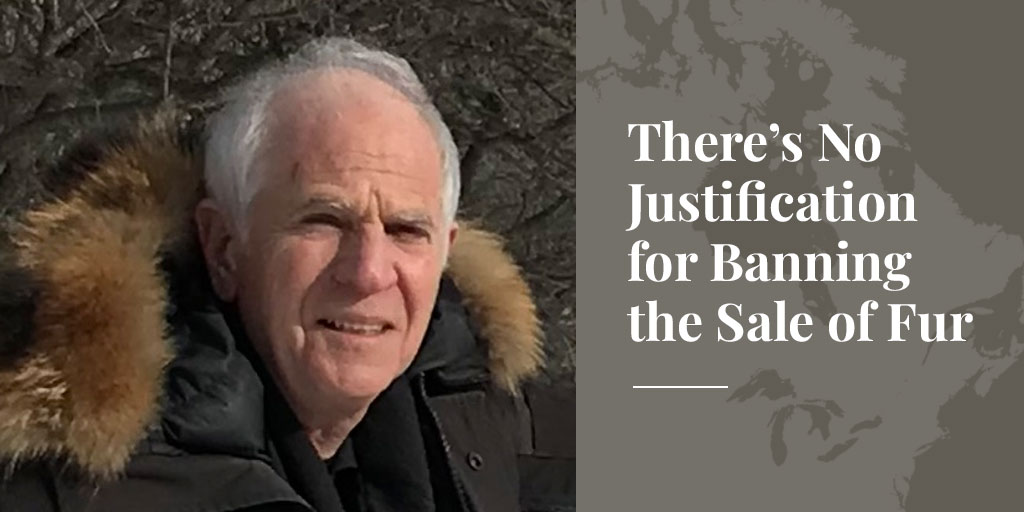
The following essay appeared recently in the Toronto Star (Canada’s largest circulation newspaper), as the pro-fur side of a debate on whether banning the sale of fur apparel and accessories is justifiable.
If we look at facts, those of us who care about the environment, ethical lifestyles, and social justice should promote natural fur, not seek to ban it. Let's review some of the reasons why wearing fur makes sense for anyone wishing to embrace a sustainable and responsible way of living.
Fur today is produced responsibly and sustainably. Only abundant furs are used, never endangered species. This is assured by provincial/state, federal and international regulations.
In the wild, most species produce more offspring than their habitat can support to maturity. Animals that don’t make it feed others, and we too can use part of this natural surplus. This is an excellent example of “the sustainable use of renewable natural resources”, a cornerstone of the World Conservation Strategy.
There is little waste. Many fur animals – especially beavers and muskrats -- provide food for trappers and their families. Others are returned to the woods to feed birds, mice, and other animals. And because fur is “prime” in late Fall/Winter when the young of the year are already autonomous, activist claims that coyotes or other animals leave behind “starving pups” are nonsense.
Many furbearers would be culled even if we didn’t use fur. Overpopulated beavers flood property. Coyotes are top predators of lambs, calves and, increasingly, pets. Raccoons and foxes spread rabies and other diseases ... the list goes on. But if we must cull some of these animals to maintain a balance, surely it is more ethical to use the fur than to throw it away?
SEE ALSO: Reasons we trap. Truth About Fur website.
Trappers take animal-welfare responsibilities very seriously: Canada is the world leader in humane trapping research, and traps are certified to conform with the Agreement on International Humane Trapping Standards. Trapping is also strictly regulated in the US, under state “Best Practices” provisions.
SEE ALSO: Neal Jotham: A life dedicated to humane trapping.
Fur farmers – producing more than half the fur in North America -- follow codes of practice to ensure their animals receive excellent nutrition and care. Farms are certified to confirm that codes are followed, and farmers may be charged for animal cruelty if they are not. In any case, providing proper care is the only way to produce high-quality fur.
SEE ALSO: Calling PETA: US fur farming is strictly regulated.
Farmed mink recycle left-overs from our own food production – parts of cows, chickens and fish that we don’t eat and might otherwise clog landfills. Manure, straw bedding, and other farm wastes are composted to produce high-quality organic fertilizer, completing the agricultural nutrient cycle.
In contrast to mass-produced “fast fashion”, each fur garment or accessory is crafted individually by artisans, maintaining skills passed from father to son or daughter. Furs are preserved (“dressed”) using alum salts, lanolin, and other benign chemicals; the activist claim that “a World Bank report cited fur dressing as polluting” is simply not true. Furthermore, furs come in a wide range of natural colours, minimizing the need for dyes.
Fur is long-lasting, recyclable, and after decades of service can be thrown into the garden compost. Compare that with fake fur and other synthetics: generally made from petrochemicals, they are not biodegradable and leach micro-particles of plastic into our waterways when washed -- plastics that are now being found in marine life. Cruelty-free indeed!
SEE ALSO: The great fur burial. Truth About Fur proves that fur biodegrades.
Fur, however, is the activists’ designated scapegoat. Perhaps because fur is often associated with glamour and wealth? But most fur producers are not wealthy or glamorous. The ugly lies parroted by anti-fur activists are all the more odious because they attack the integrity and livelihoods of hard-working farm families; of First Nations and other trappers who are among the last people maintaining our North American land-based heritage; and of artisans producing warm and durable clothing with responsibly produced natural materials.
There is little public discussion of how insulting and hurtful activist lies are for the people involved. Living far from media centres, their voices are rarely heard. TruthAboutFur.com was created to help bridge that gap.
No one is obliged to wear fur, but each of us should have the right to make this decision for ourselves. Especially because animal activists now oppose any use of animals. The same misleading and insulting arguments and tactics used against fur are now being mustered against wearing leather, silk and wool; against eating meat or dairy products. Shall all these products be banned as well?
Each of us can decide where we draw the line, these are personal choices. But if you believe it’s ethical to use animal products that are produced responsibly and sustainably, you can wear fur with pride.
***
To learn more about donating to Truth About Fur, click here.
City’s Fur Ban an “Unconstitutional Attack on Consumer Rights” The International Fur Federation (IFF) has launched litigation to prevent San…
Read More

The International Fur Federation (IFF) has launched litigation to prevent San Francisco from implementing a city ordinance banning the sale of fur. The ordinance, passed in 2018, gave existing department stores until Jan. 1, 2020, to sell off their remaining fur stock and prohibits the sale of newly manufactured fur coats, hats, gloves, fur-trimmed parkas, and other products.
The lawsuit, filed on January 13, argues San Francisco has “no legitimate local interest to ban fur sales” and that the ordinance is an “unconstitutional restriction on interstate and foreign commerce”.
“In an attempt to legislate morality, Supervisor Katy Tang, sponsor of the ban, stated that businesses ‘need to get with the times.’ Yet the current times do not allow for ignoring the Constitution’s prohibition on restraining interstate commerce,” said Mike Brown, the IFF’s CEO for North America.
“Proponents of San Francisco’s fur ban, including the radical animal rights group PETA, also want the sale of leather, wool, and other animal products to be banned,” said Brown.
Contrary to San Francisco city council claims, fur products remain popular with consumers in that city and nationwide. Fur sales in San Francisco alone are estimated to be $40 million annually. Globally, the fur industry is a $23 billion business. A 2019 Gallup poll also confirmed that a majority of Americans believe that it is morally acceptable to wear fur.
While fur producers worldwide are complying with the humane standards under the IFF’s new FurMark program, San Francisco’s fur ban is so extreme that it blocks even humanely certified products. FurMark is a certification program to provide consumers with assurance about animal welfare and sustainability standards in place for the production of fur products in North America and Europe.
The San Francisco fur ban is completely arbitrary and creates a troubling precedent for other responsibly produced animal products. “If this law is allowed to stand, there’s nothing stopping San Francisco from banning wool, leather, meat, or other products that a small group of activists don’t approve of,” said Mark Oaten, CEO of the IFF.
“Californians should have no fewer rights than residents of other states. They should be free to buy legally produced goods unless there is a public safety or health issue - which does not exist here,” said Oaten.
Along with harming local businesses, San Francisco’s fur ban will have unintended consequences that damage California’s efforts to fight pollution, because the “fake fur” alternatives to natural fur are made with petroleum. Research is showing that these synthetics shed microfibers into the waterways when they are cleaned. Plastic microfibers are now even being found in marine life. A single garment can shed 100,000 microfibers in the wash.
“Plastic microfibers are a leading cause of ocean pollution, in San Francisco Bay and the Great Pacific Garbage Patch. The National Science Foundation recently announced that microplastics may be 1 million times more prevalent than previously estimated,” said Oaten.
SEE ALSO: Global Campaign Highlights Benefits of Real Fur Over Plastic Fake Fur. Truth About Fur.
The IFF lawsuit is the latest in a string of legal challenges to California’s attempt to legislate “morality”. The state of Louisiana and a coalition of members of the alligator/crocodile supply chain have sued California over its ban on alligator and crocodile products, which was slated to take effect Jan. 1. As a result, a temporary stay was imposed on the implementation of this ban.
Recently, California was also sued by the American Farm Bureau Federation and the National Pork Producers Council over the state’s sweeping ban on the sale of conventionally produced pork products, legislation slated to take effect in 2022. Litigation against California’s foie gras ban is also ongoing in federal court.
SEE ALSO: Why a Ban on Fur and Foie Gras Should Matter to Ranchers.
The fur industry’s legal challenge zeroes in on the constitutionality of state and municipal fur bans in California under the Commerce Clause of the US Constitution. Additionally, legal experts believe US states cannot arbitrarily ban products from foreign countries from being sold under free-trade treaties such as the North American Free Trade Agreement. The IFF lawsuit was filed in the US District Court for the Northern District of California. Los Angeles and the California state legislature also passed fur bans in 2019, but they do not take effect for several years.
“California’s fur bans are an arbitrary assault on consumer choice and retail businesses," said Brown. "These laws ban a responsibly and legally produced natural product from the marketplace simply because certain special interests don’t like the product. This is a startling precedent, to impose the morality of specific groups onto all citizens. There is no legitimate issue of public health and safety behind fur bans - simply a belief by some lawmakers that they don’t like fur, and therefore no one should be allowed to buy it."
SEE ALSO: 6 Reasons Why Banning Fur Sales Is a Very Bad Idea. Truth About Fur.
***
To learn more about donating to Truth About Fur, click here.

